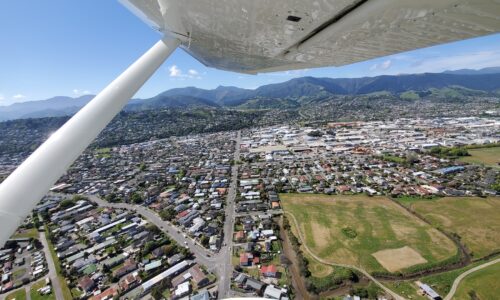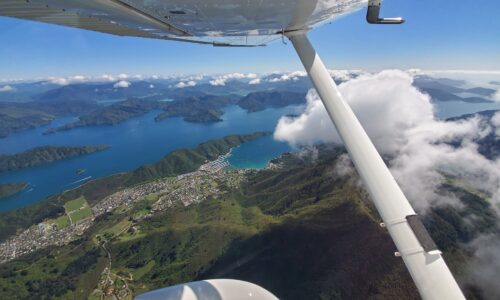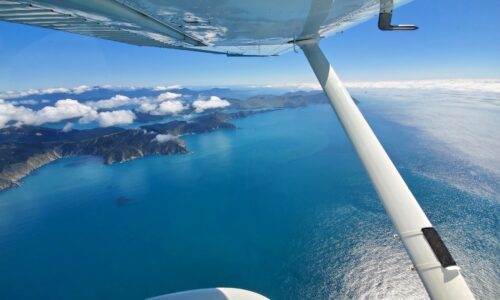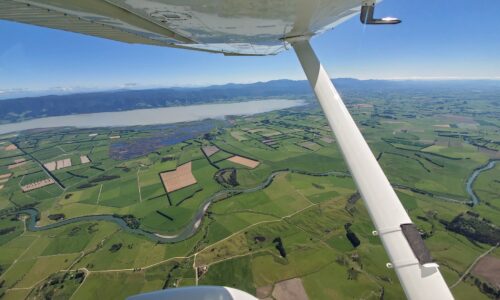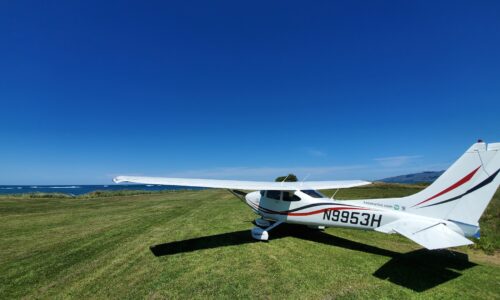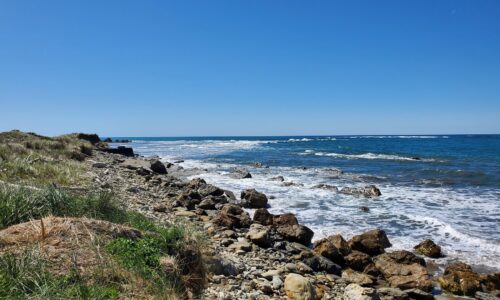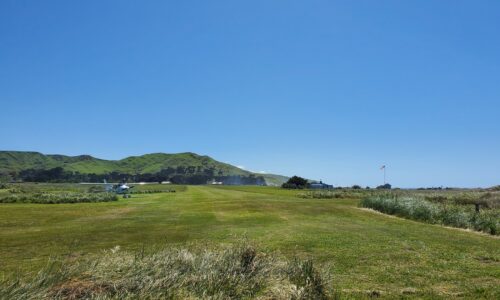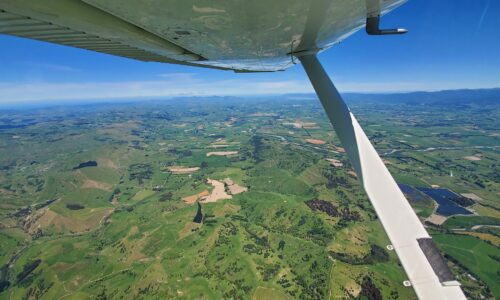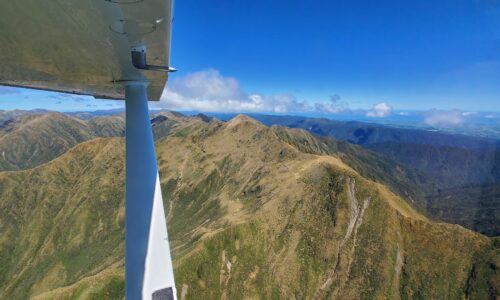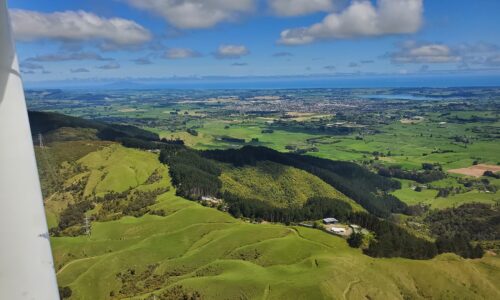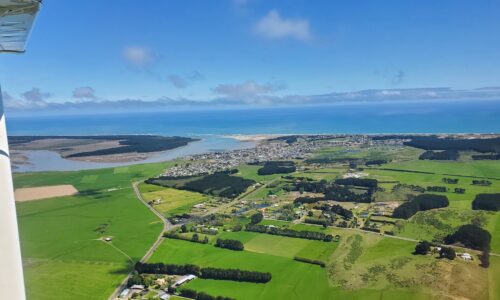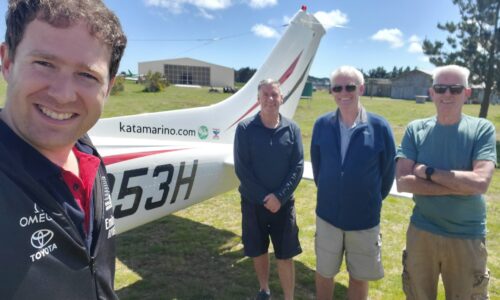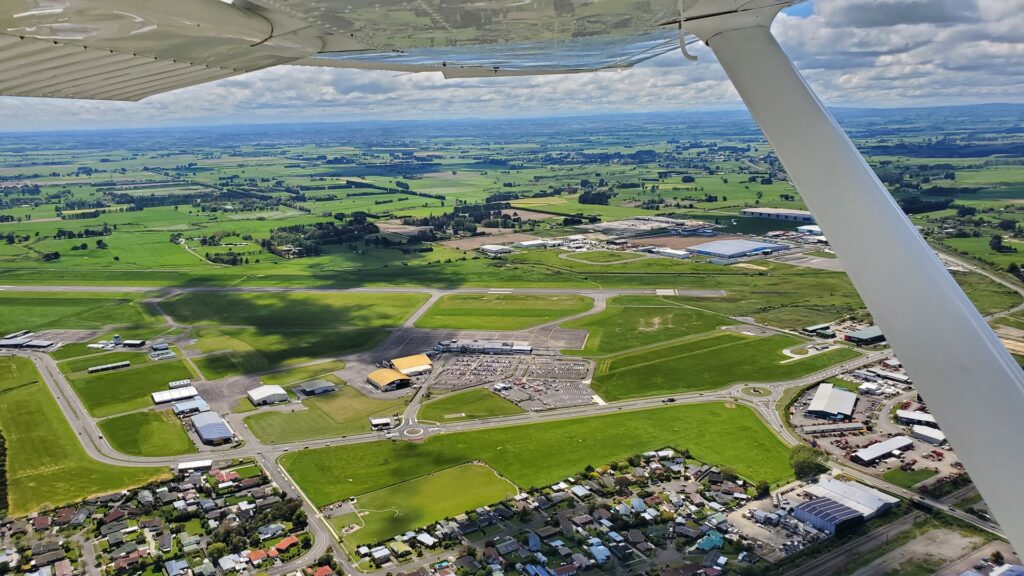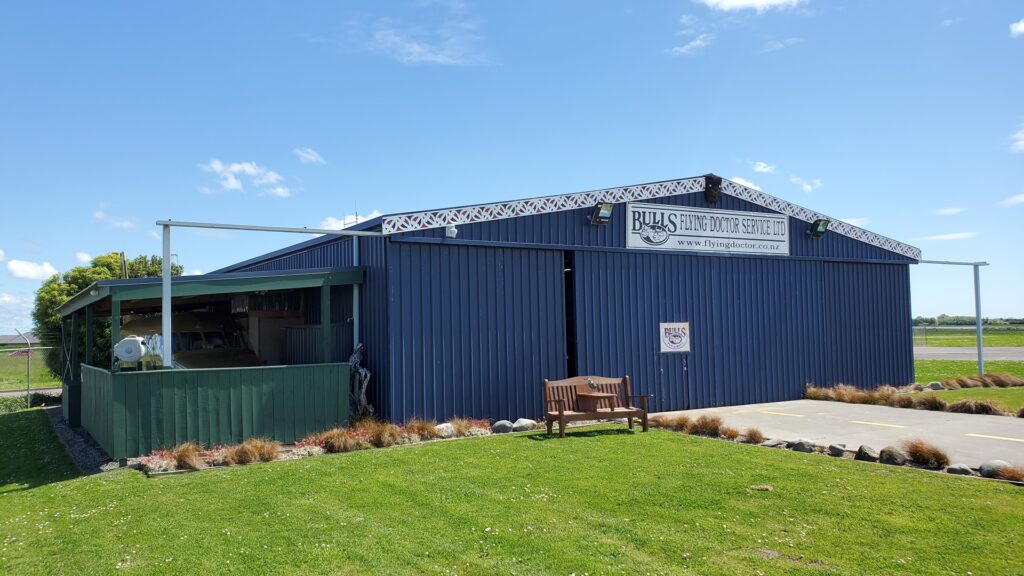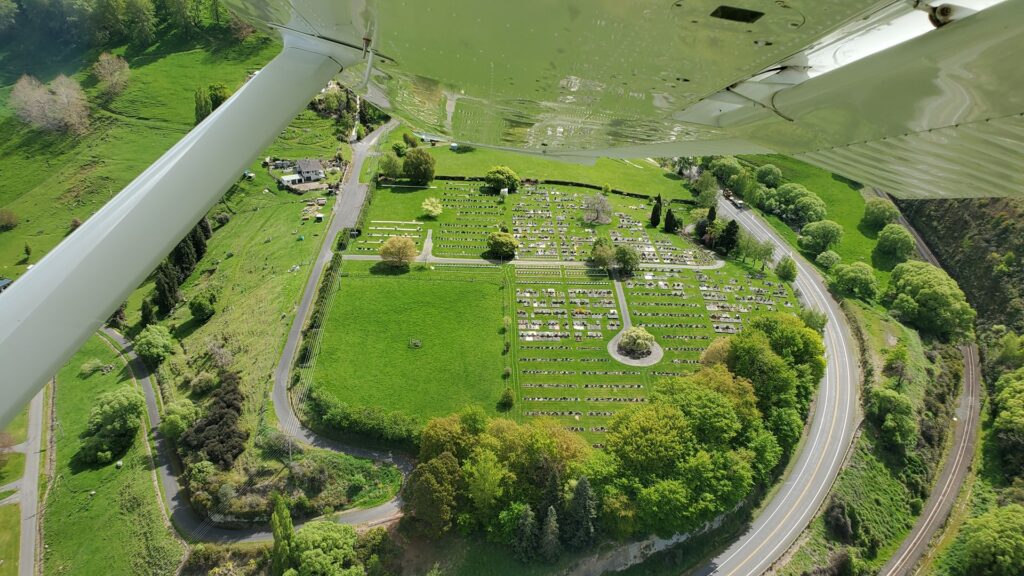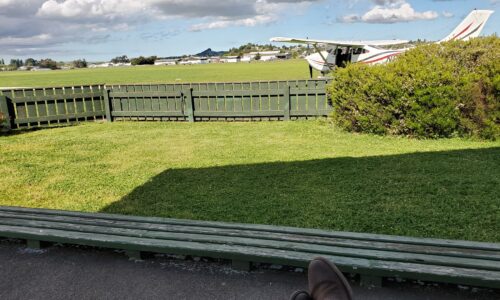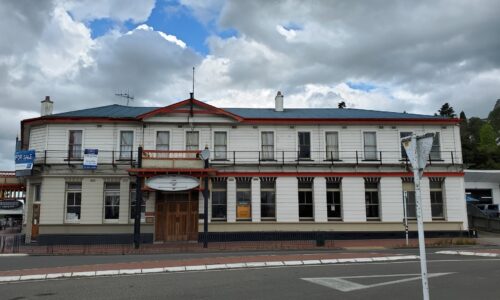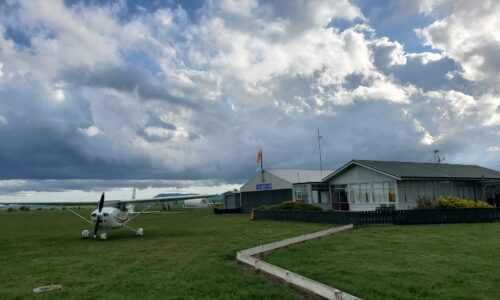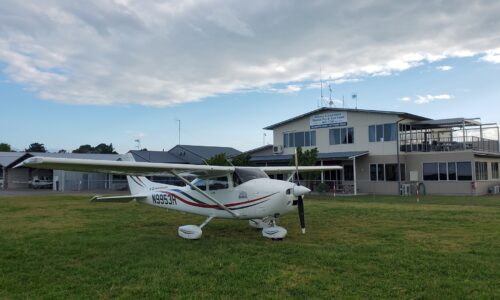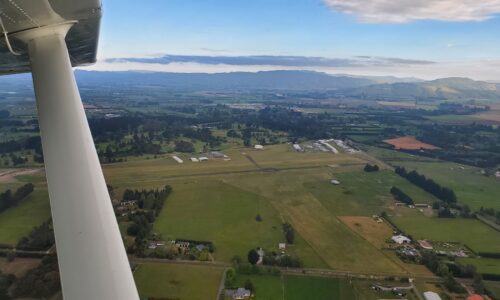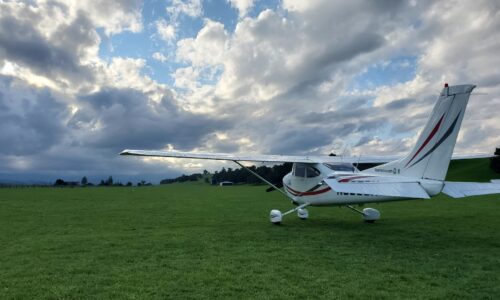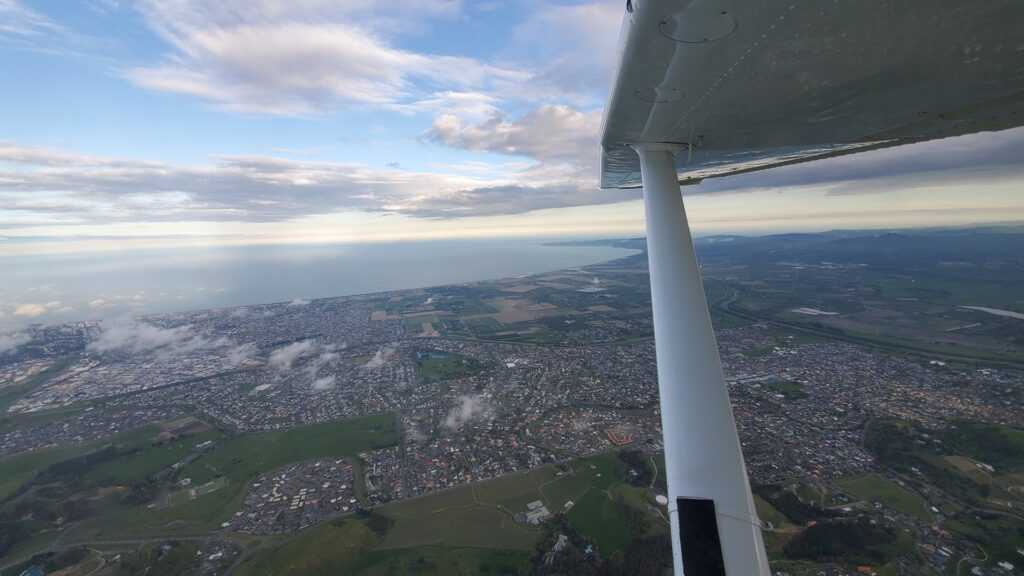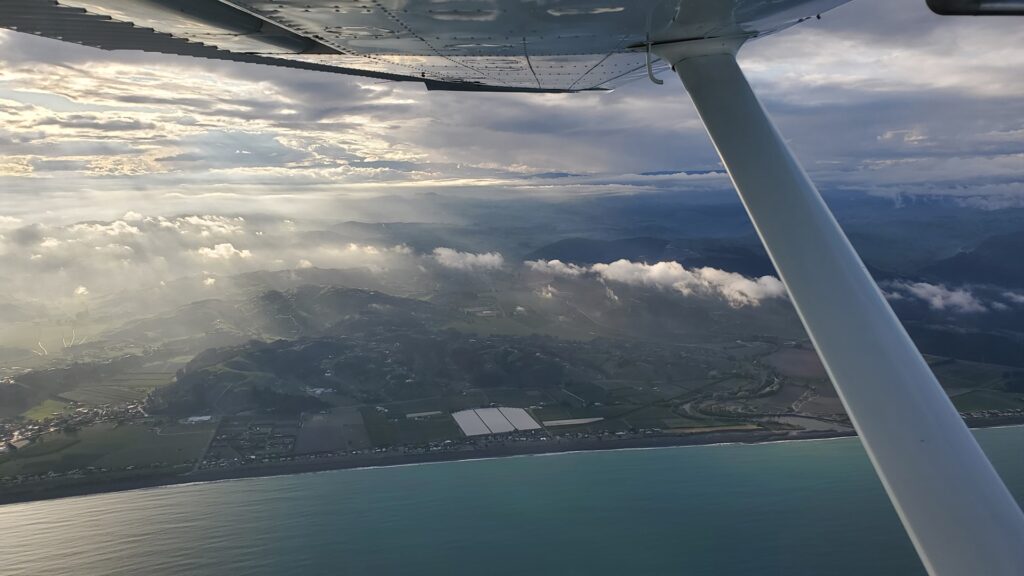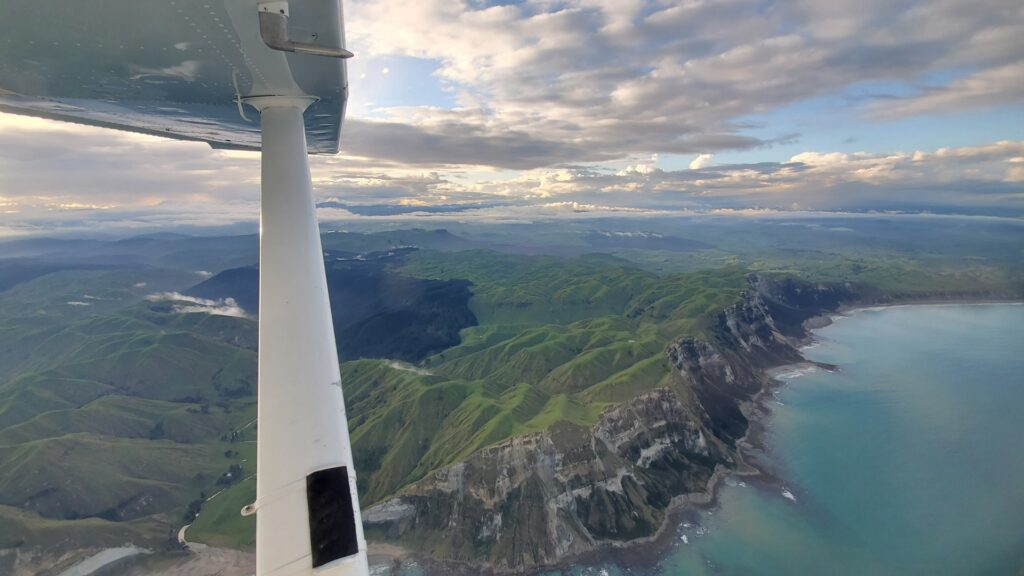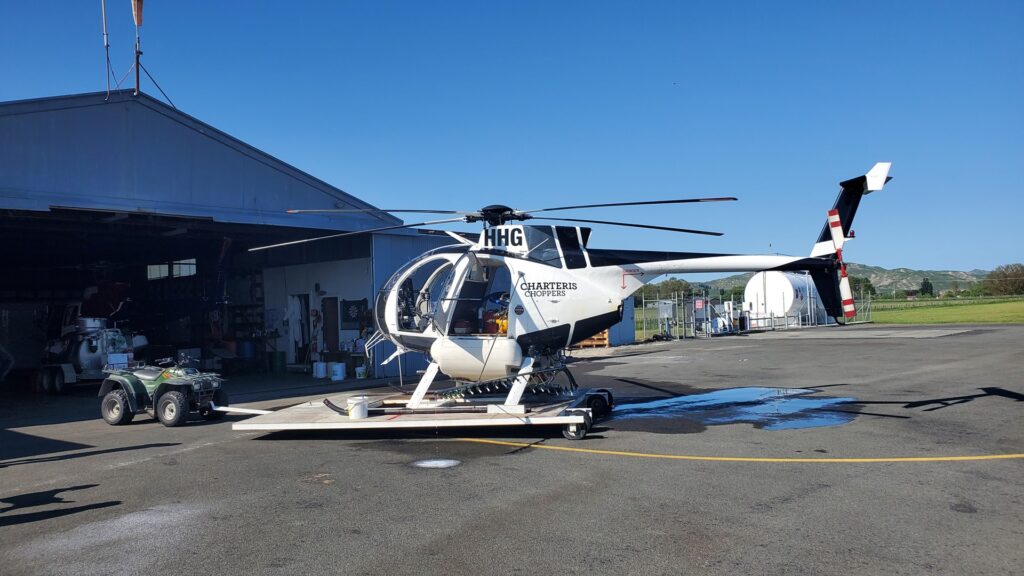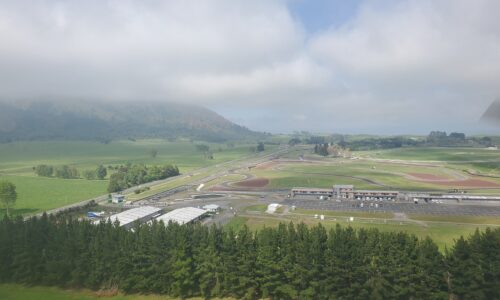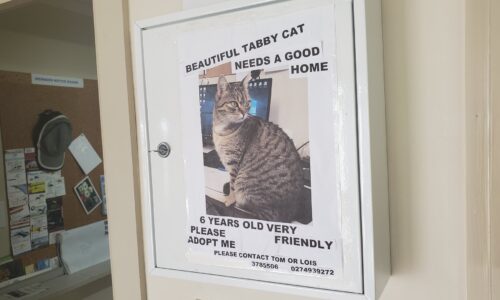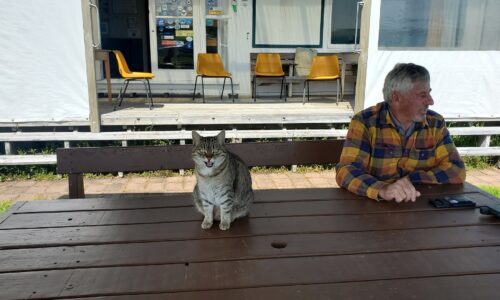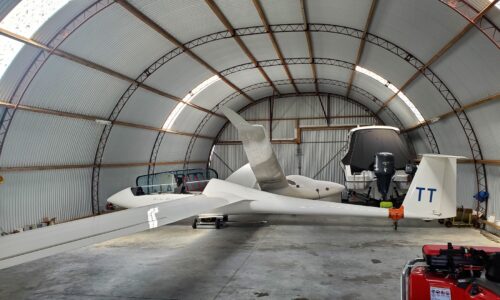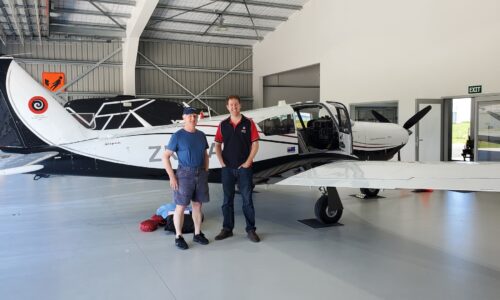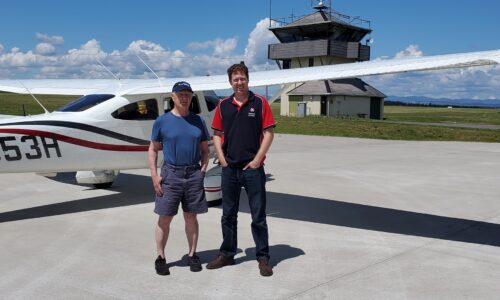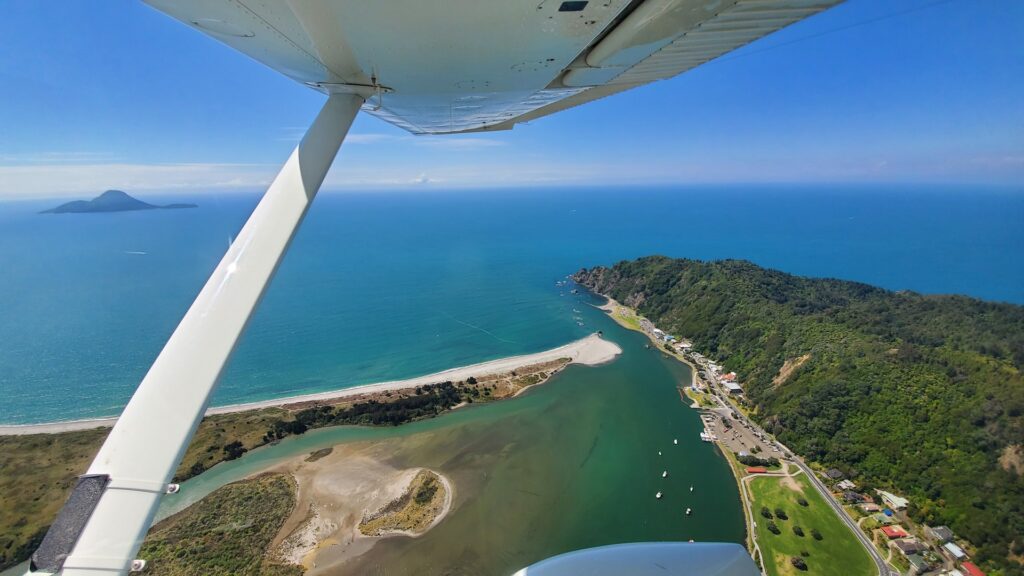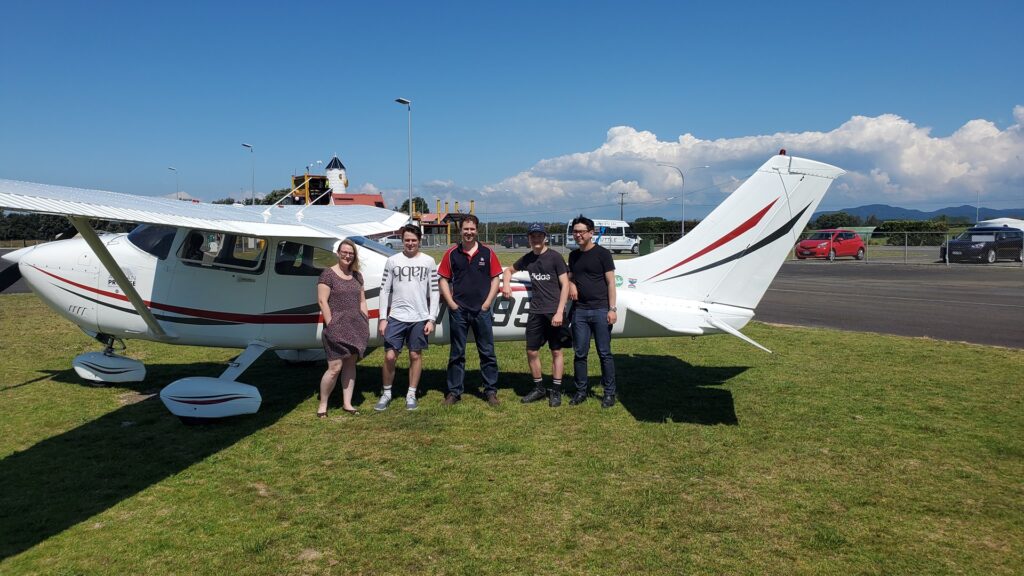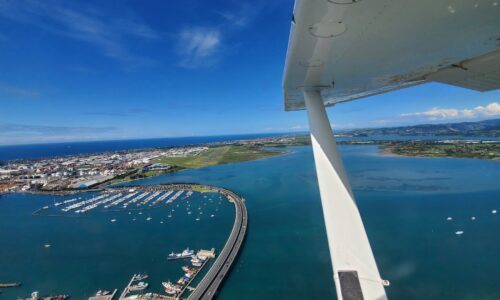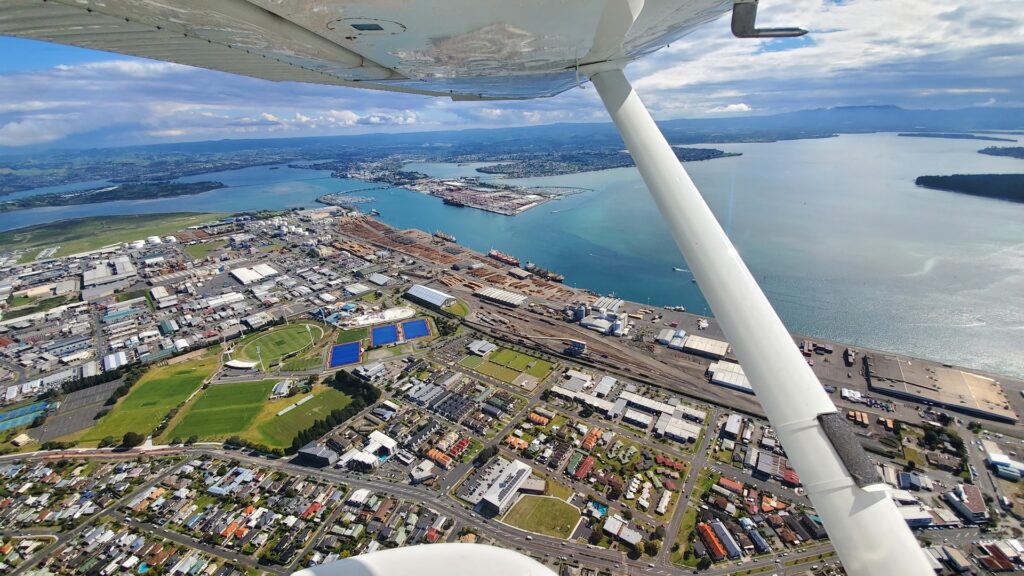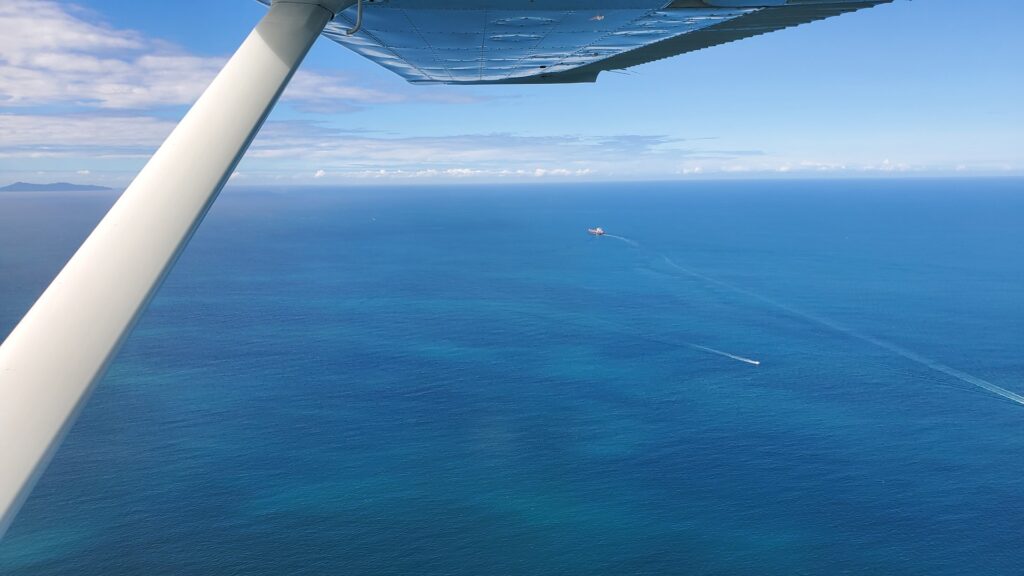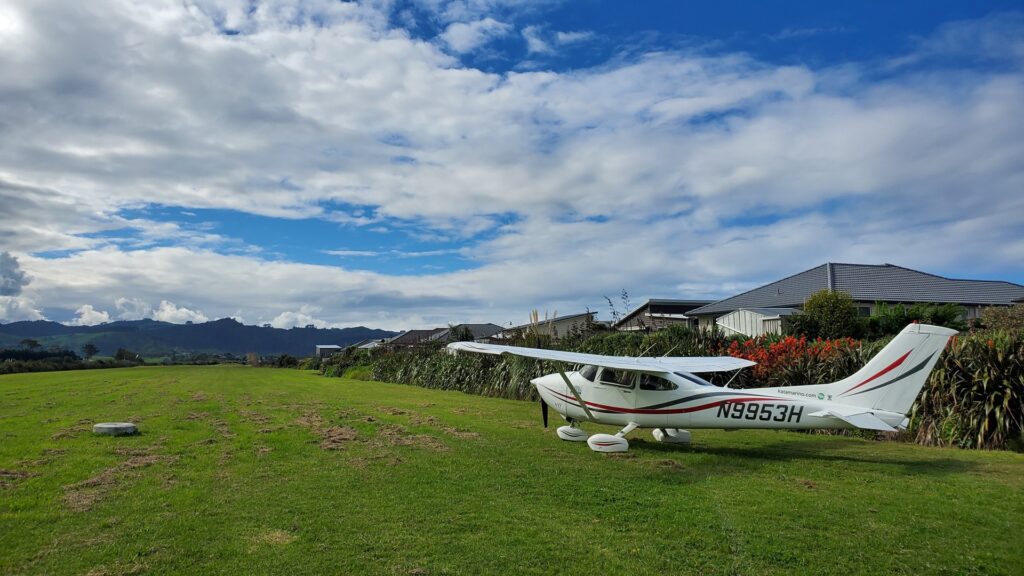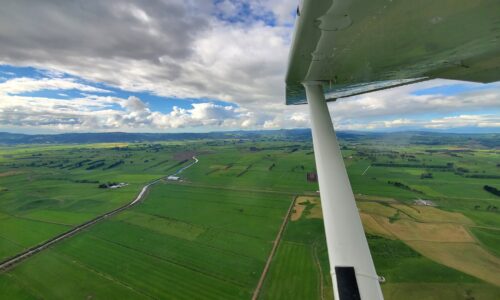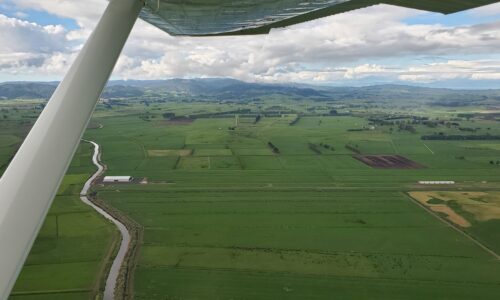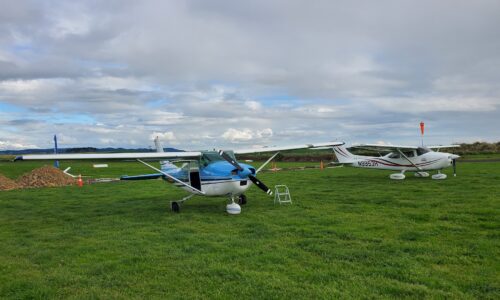Round the World – New Zealand 2, Part 8
The Australian government had recently announced that quarantine-free travel would soon be allowed from New Zealand to Australia (although not back again). I had covered a great deal of New Zealand in the time that I had been there, but there was still an enormous amount of Australia to see, so I decided to retrace my steps a little and fly back west, over to Australia, to tour some more of the country. The Pacific Islands still had their borders closed, so continuing the trip towards the US was not yet an option. The conditions of the “free travel zone” were such that arrival had to be into New South Wales; I therefore decided to fly into Sydney, departing out of Kerikeri in the Bay of Islands, near the northern tip of New Zealand.
I said a fond farewell to Shelley and Kevin, and the rental car company dropped me back at Planey. My plan was to spend two days flying slowly up towards Auckland, visiting all the little airports I could find along the way that I hadn’t landed at before. I’d then attend a wilderness survival course before staying in Auckland for a few days with a friend of Shelley’s. After that I’d head north to see a bit of the Bay of Islands, and then head out to Australia. Launching off of runway 02 at Nelson, I made a gentle right turn and headed towards the North Island, quickly exiting the Nelson class D airspace and then climbing underneath the airspace shelves to keep clear of terrain as I proceeded on course towards Picton.
I called up Wellington over the radio, and they gave me clearance to continue at my current altitude and pass through their airspace. They routed me just a mile or so south of Wellington airport, offering me excellent views of the city from up high. I was given a vector on my way outbound, to stay clear of some incoming IFR traffic, but soon released to proceed directly towards my first stop of Flat Point.
I had already landed at the majority of large and medium sized airports in New Zealand, so my destinations over the next few days would largely be smaller local and private strips. I had identified most of these from the AOPA NZ airstrip guide. Flat Point airfield is one such strip, 500m of grass perched right on the coast to the east of Wellington. I flew a low downwind to check out the strip, before coming in for a landing from the northeast.
There was nobody around at Flat Point, so after stretching my legs and enjoying the coastal air for a while I started Planey up again, taxiing back to the northeast to start my takeoff run. A climbing left turn gave me final views of Flat Point as I gained altitude to clear the coastal hills, and pointed the nose to the northwest and my next destinations. The flight took me past Masterton, home of the New Zealand aerobatics competition that we’d stopped off at in late February, and then over the rugged bush-covered hills of the central North Island.
My next stop would be Koputaroa, a small private farm strip north of Wellington. I’d called ahead to get permission to visit, and had been welcomed and given a briefing. The strip is well kept, short grass, and sits right next to a collection of farm buildings and a silo. As I taxied in I spotted a light aircraft tucked in the back of the barn. Once again, nobody was around, so after a brief stop I jumped back into Planey and fired up the engine.
The next leg was just a short one, to the airstrip of Foxpine. This is a little airpark near the town of Foxton, on the west coast of the North Island. The flight took just a few minutes, and after my typical downwind to check the condition of the strip I touched down and taxied to park next to what appeared to be a sort of club house. As I exited the aircraft, a car drove over towards me and stopped nearby; out of it emerged a gentleman with a friendly smile who turned out to be Mike.
Mike turned out to be a resident pilot who had been out tinkering with his aircraft, and was curious to see a foreign registered aircraft land. He offered me a cup of tea and a biscuit, and we sat and chatted about my trip and the history of the airport for a while. Apparently it had been neglected for some time, but was now back on the upswing. As we spoke, we could hear a C172 on the radio calling inbound; it performed a touch and go, and then landed and taxied in. They turned out to be two friends of Mike, out for a flight, and I ran through the story of the flight again for them. I was getting pretty good at reeling it off! I left the three of them to chat as I headed out again; I still had a few stops to go, and time was ticking on.
I’d be stopping in next at Palmerston North, a larger airport close by to the east. Tower directed onto a downwind, and gave me parking instructions. I shut down in a space in visitor parking, and dismounted. I had intended to walk around to the terminal and visit the cafe for a bite to eat, but it soon became clear that this would be a much longer walk than was practical. I was thinking about getting back into the aircraft and continuing when I noticed an interesting and somewhat familiar hangar; it was Dr Dave’s home base! I decided to go and say hello. I poked my head through the ajar hangar doors; and everything was exactly as I had imagined it would be.
The entire hangar was decorated in a tremendously eccentric style, chock full of interesting curiosities and keepsakes. Dr Dave wasn’t around, but his colleague was there working on administration and invited me to look around all I wanted, as well as the ubiquitous provision of a cup of tea and a biscuit! I spent a while checking out the countless airplane and ship models, as well as all the curios spread around from a long career in aviation.
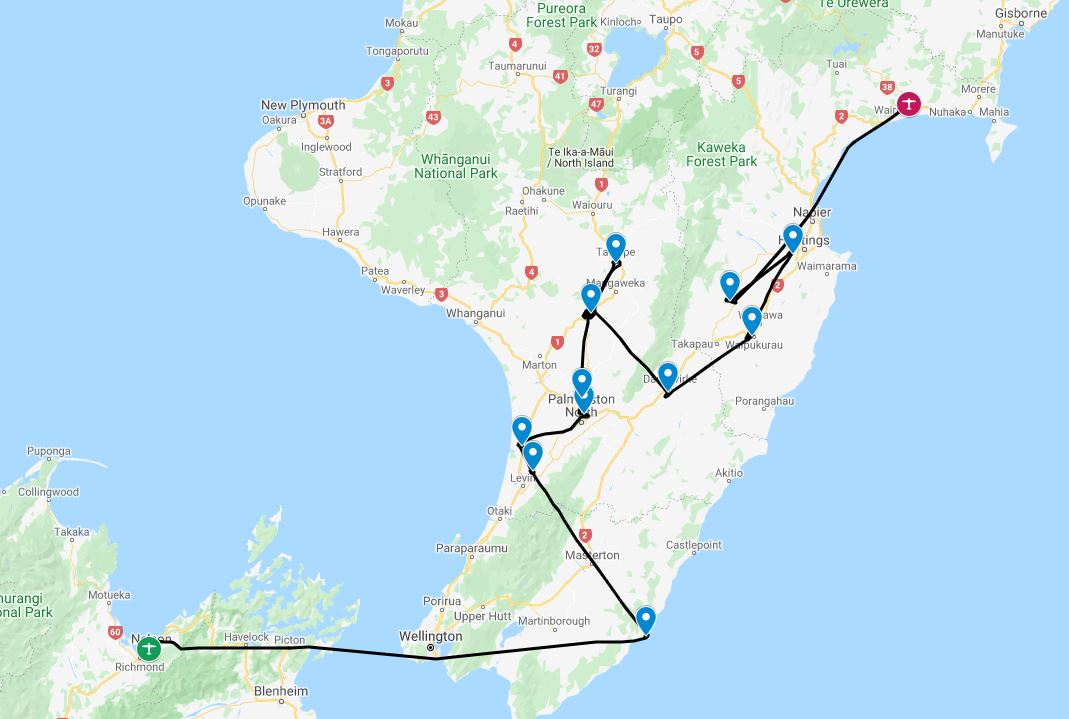
My next stop would be the airfield of Feilding, just a few miles north of Palmerston North. I flew straight out of the Palmerston North traffic circuit, and into the circuit for landing at Feilding. There was no other traffic around, and I was on the ground and rolling out just minutes after departure.
The runway at Feilding is fenced off from the rest of the airport, with cattle grids preventing livestock from access to the runway. Animals are otherwise free to roam the grounds however, and clearly help keep the grass short! Sheep were lounging around, many taking advantage of the shade thrown by the wings of parked aircraft. After a quick stretch of the legs it became clear that there was little to do there, so I fired up the engine and taxied back out to the runway, pausing for a while to allow sheep to clear the taxiway ahead of me.
I was heading north now, towards a couple of grass strips. I hadn’t managed to contact the owner of the first one, so I planned to try calling again en-route. It was a pleasant flight across the rolling hills of the North Island, very reminiscent of the “Footrot Flats” comic series (which I heartily recommend for getting a fun look into New Zealand farm life!) The farm theme continued when I arrived at my first planned stop, Flat Hills, to find the strip fairly well covered with a mixture of cows and sheep. I hadn’t managed to get in touch with the owner, so after a circle to inspect the strip I decided to play it safe and continue towards airstrip number two.

I had managed to contact the owner of the Taihape strip and get a briefing on the field. It was more challenging than most of the places that I’d landed recently, being a “one way” strip with a bit of a slope, and not much in the way of length. I performed a strip inspection and low fly-by as recommended by the owner, largely in order to shift the sheep off to one side! As I’d been informed would happen, they all ran off to one side of the strip, and I was able to come in and land uphill, parking in front of the single large hangar half way along the runway.
There was nobody around, so it was another short stop. While on the ground I tried to call the owner of Flat Hills again, and this time I got through. He told me I was welcome to drop in, and just to perform a couple of low passes to clear the cows. This would be an interesting experience; I had a mental image of cows being rather more stubborn than sheep when it comes to moving. I was mostly right; a couple of fast, low passes moved the cows a little, but they soon started wandering back! Luckily they were kind enough to leave me a gap that was just big enough to land in, and reluctantly moved to one side to let me past as I taxied to park at the north eastern end of the long, grass strip.
After I shut down, the cows demonstrated their curiosity by immediately starting to head in my direction. They stopped a short distance away, and then started to edge closer. I started to worry about being blocked in by cows and unable to depart, so after snapping a few pictures I started the engine and eased my way through the herd to an open area of the strip, departing off a left downwind and heading southeast towards the local airport of Dannevirke.
The day was drawing on, so Dannevirke was another short stop before I turned northeast and started flying in the direction of my night stop. Before getting there however, there were a couple more stops to be made, a couple of new airports to be added to the logbook! My first stop was Waipukerua; a major attraction of this airport was the fact that it was a short walk into the town center. This would be my opportunity to have a late lunch, obtain some food for dinner, and pick up a couple of items I still needed for my upcoming wilderness survival course. After relaxing on the porch of the flying club for a few minutes, I walked into town to complete my tasks; as well as stopping for a chocolate brownie!
Evening was now steadily approaching and I hurried back to the aircraft, and departed from Waipukerua. I’d next be landing at Hastings, a smaller airport close to Napier where I’d stopped off on the Chatham Islands run. At this time of day there was nobody around, and I quickly took off again. I was retracing my tracks, to visit a strip which I had received permission to land at at the last minute, Kowhai.
Kowhai was yet another strip with stock grazing on it, something I was fast becoming used to. This time it was a combination of sheep with lambs, and cattle. They were very obedient in terms of running off to the north side, as I had been told they would do, and landing was straightforward. A short stretch of the legs, and a couple of photos, and it was time to head off to my final stop for the night.
It was a perfect evening for flying, allowing me beautiful views of Napier and the coastline as I made my way east towards Wairoa. I joined overhead the field and descended onto a left downwind, keeping a close eye on the Air Ambulance King Air that was parked up on the apron, with a couple of vehicles and several people buzzing around it. I landed to the south and taxied to the far corner of the apron to park up for the night, making sure I was well out of the way of any other traffic that might wish to come or go.
Wairoa is a town of around 5,000 people, perched on the northern edge of Hawke Bay. Rain was clearly on the way, so I decided not to make the 30+ minute walk into town, in favour of getting my campsite set up and getting an early night. I pitched my tent under the pilot-side wing, with a nice view over the apron, and turned in to the sound of rain lightly pattering on the tent fabric above my head.
I was awoken the next morning by the sound of a helicopter. This turned out to be an aerial work chopper, departing for some crop spraying work. I lazed for a while before getting up and breaking camp; as I was packing up, the helicopter returned and I got the chance to say hello to the crew. After a quick chat I embarked Planey, and started up the engine; it would be another long day.
The first flight of the day would take me northwest, to a large farm strip in the central North Island. As I flew over the forests, I wondered how many Kiwi and other interesting New Zealand native species were running around below me. Rangitaiki strip was in great condition, and with minimal wind I chose my direction of landing to finish the run at the end of the strip which had people nearby, so I could say hello. As I parked, however, they all left; so I decided to fire up again and continue on my way!
My next stop would be the grass strip of Centennial Park, on the outskirts of Taupo. This strip is located alongside the Taupo Motor Racing park, and is therefore rather easy to find. The short flight took me over the ridge of hills that marks the border between the Bay of Plenty and the Waikato regions, and then down to a landing in the shadow of Mt Tauhara. While the flight up until now had been under clear skies, low cloud was hanging around the Taupo region and I had to sneak in around patches of mist. There were no other aircraft around, so I parked up right in front of the clubhouse and hopped out to say hello.
Centennial park is primarily a gliding field. One of the glider pilots was hanging around, starting to prepare for towing his glider away for a weekend training camp at another field. The club mechanic was also tinkering around. I was invited inside for the essential cup of tea, and we chatted about my flight and about the gliding exploits of those at the club. New Zealand is a real gliding paradise with its geography lending itself to excellent soaring conditions.
I was in need of fuel, and the closest available was at the main Taupo airport. This airport is also the home of Barry and Sandra Payne, who call themselves the “Bazflyers”, and have flown all over the world (including around it) in their beautiful Piper Comanche. I had met Barry back in February, and now phoned him again to see if he was around. He was, and offered to help me fuel up and provide me with lunch! I set out from Centennial Park under the final wisps of cloud and completed the 5 minute flight to Taupo. The skydiving operation was in full swing, so I made sure to coordinate with their jump plane and avoid the skydiver landing area as I came in.
Barry was waiting for me as I taxied in, and directed me straight to the fuel pumps. We filled up, and then moved Planey over to sit in front of his hangar while we went inside for a cup of tea and some lunch. Sandra was busy painting, but kindly took the time to make us some sandwiches and slices of cake! Barry and I spent an enjoyable hour chatting about our respective adventures, and upcoming plans for future trips. We finished up with some photographs with the aircraft, as well as admiring each other’s setups, and also bumped into the pilot of the skydiving Caravan. This turned out to be none other than one of the ladies who had been evacuated from the beach near Raglan after being hit by the Beaver, back at the start of the year; I was very happy to see that she’d fully recovered!
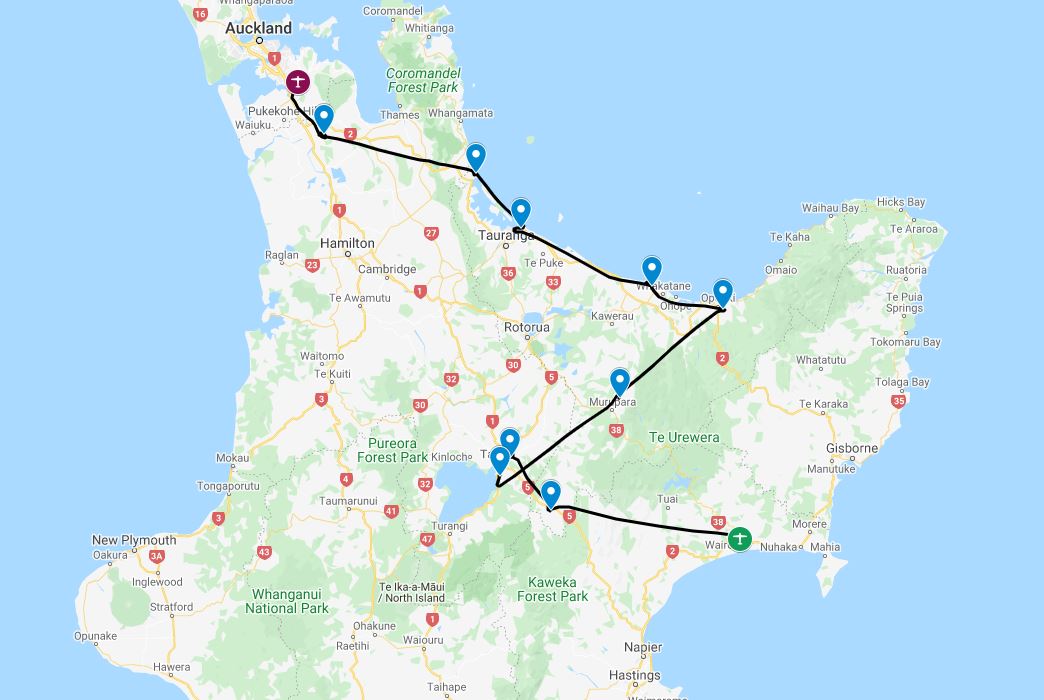
I departed from Taupo and headed northeast, towards the Bay of Plenty. Along the way I stopped briefly at Galatea, a pleasant little grass airstrip with nobody around. I didn’t get out of the aircraft; it was time to head to the coast!
My next stop would be Opotiki, on the shores of the Bay of Plenty. Tucked at the eastern end of the bay, it’s the last major stop before the highway climbs into the mountains heading east. I landed on the narrow westerly runway, battling a stiff crosswind – the sea breeze was getting up at this time of the afternoon. Parking near the only significant building, I spotted a couple of gentlemen tinkering with a very expensive looking helicopter, so went across to say hello.
The helicopter belonged to an aerial work business; crop spraying, load hauling and the like; which was run/managed by the two men with it. The rugged landscape of New Zealand seemed to me to lend itself well to helicopter operations, and apparently business was booming! We chatted for a while, about the usual topics, before it was time for me to head off again. As always, I would have liked to spent much longer at every airport meeting and chatting to people, but if I did that it would take me three times as long to get anywhere!
I took off with a slight tailwind, but the runway was a good length and it beat taxiing all the way to the other end. I turned out to the left, and flew along the shoreline back towards the west and my next destination of Whakatane. A slight headwind left me slower than usual, and kicked up some turbulence over the small range of hills in the middle of the route. It was a short flight, though, and I was soon touching down and parking opposite the flight school.
A couple of the students came out to greet me, and find out about this aircraft with a strange registration that had parked outside their school. They invited me inside for a drink, and we had a chat before heading back outside so they could take a look at the aircraft; we took the opportunity for a couple of group photos as well!
Evening was drawing in. I departed from Whakatane and continued northwest along the coast. After just a few minutes, the town of Tauranga came into view ahead of me. Tauranga is the fifth largest city in New Zealand, and host to the country’s largest port. After all the tiny airfields I had been visiting, it felt a little like I was flying over a metropolis. I was directed onto a right downwind, over the city, and then onto a right base which took me right over sections of the port and marina. I landed on the grass runway, behind a pair of Cessna 150s that were flying in formation, and followed them to a parking area opposite the flying club.
The C150 pilots were a couple of guys in their early 20s, practicing for a flying competition against another aero club that was coming up the following weekend. They welcomed me into the clubhouse and we chatted for a while about the upcoming contest. They headed off, and I walked along a few hangars to locate the point for payment of landing fees; on my way back I couldn’t help but turn and investigate what appeared to be a Tiki bar set up in the back of one of the hangars. It belonged to a small commercial operator, who ran Cessna 172s and 206s to and from the nearby islands. While patrons were waiting for the flight, they could enjoy a drink; perfect!
After returning to the aero club and chatting to the Chief Instructor for a while, I set out once more to the west. I took off from the grass runway and was directed onto a left downwind, departing the Tauranga area just offshore from Mount Maunganui. Shortly after departure I was lucky enough to overhear a radio exchange between the control tower and a departing Piper. He was denied a takeoff clearance “for commercial reasons”, and then decided to declare an emergency. He may have been thinking that, in an emergency, the pilot can disobey any instructions in order to ensure the safety of the flight, but this situation didn’t seem to qualify for that and ATC was having none of his nonsense. As I switched frequency, he was returning to parking, still grumbling and arguing over the radio.
The airstrip at Waihi Beach is small, grass, and when landing to the west features a significant dogleg on short final. It’s a fun place to land. I touched down, rolled out, and taxied back to park at the western end of the strip, watched by an elderly gentleman who was sitting on a folding chair outside of an open hangar door. He greeted me as I approached, and offered me a beer; given that I still had a couple of flight legs to go, I went for a ginger ale instead! Before long, a couple of others joined me, and they filled me in a bit about the history of the strip. It has apparently gone through a few cycles of being active, and then a bit neglected, but right now was on something of an upswing with a couple more aircraft due to arrive and take up residence alongside the four or five that were already tucked away in the single, long hangar situated at the western end of the runway. After a bit more chatting, it was time to head off to my penultimate stop for the day, and I had arranged a time to meet the owners; I didn’t want to be late!
My final stop before Ardmore was the privately owned airport of Mercer. It is home to a skydiving operation, a backpackers hostel, a maintenance facility, an aero-modelling club, and also the engine testing facility for the Rocket Lab space launch company! The owners had invited me to stop in and spend a bit of time there; they were both very accomplished aviators, with the lady (Dee) in particular having undertaken several major inter-continental flights. Unfortunately it turned out that she was not able to be there, but I had a very enjoyable stop with her husband Neil and one of their employees.
Neil’s employee (whose name I’m embarrassed to have forgotten) gave me a driving tour of the airfield before I departed. The most striking feature was an enormous hangar, large enough to hold an old Empire-style flying boat, and apparently it was being refurbished for exactly that purpose! Down the other end of the field were a few private hangars, and also the engine testing facility for Rocket Lab. Apparently they had chosen to base at Mercer because dealing with a private landowner was much easier than dealing with public authorities when wishing to conduct testing activity.
I was dropped back off at the aircraft, just in time to say hello to the jump pilot who was taxiing back in in the skydiving C182. Making sure that all canopies were clear, I took off and departed off the left downwind towards Ardmore airport.
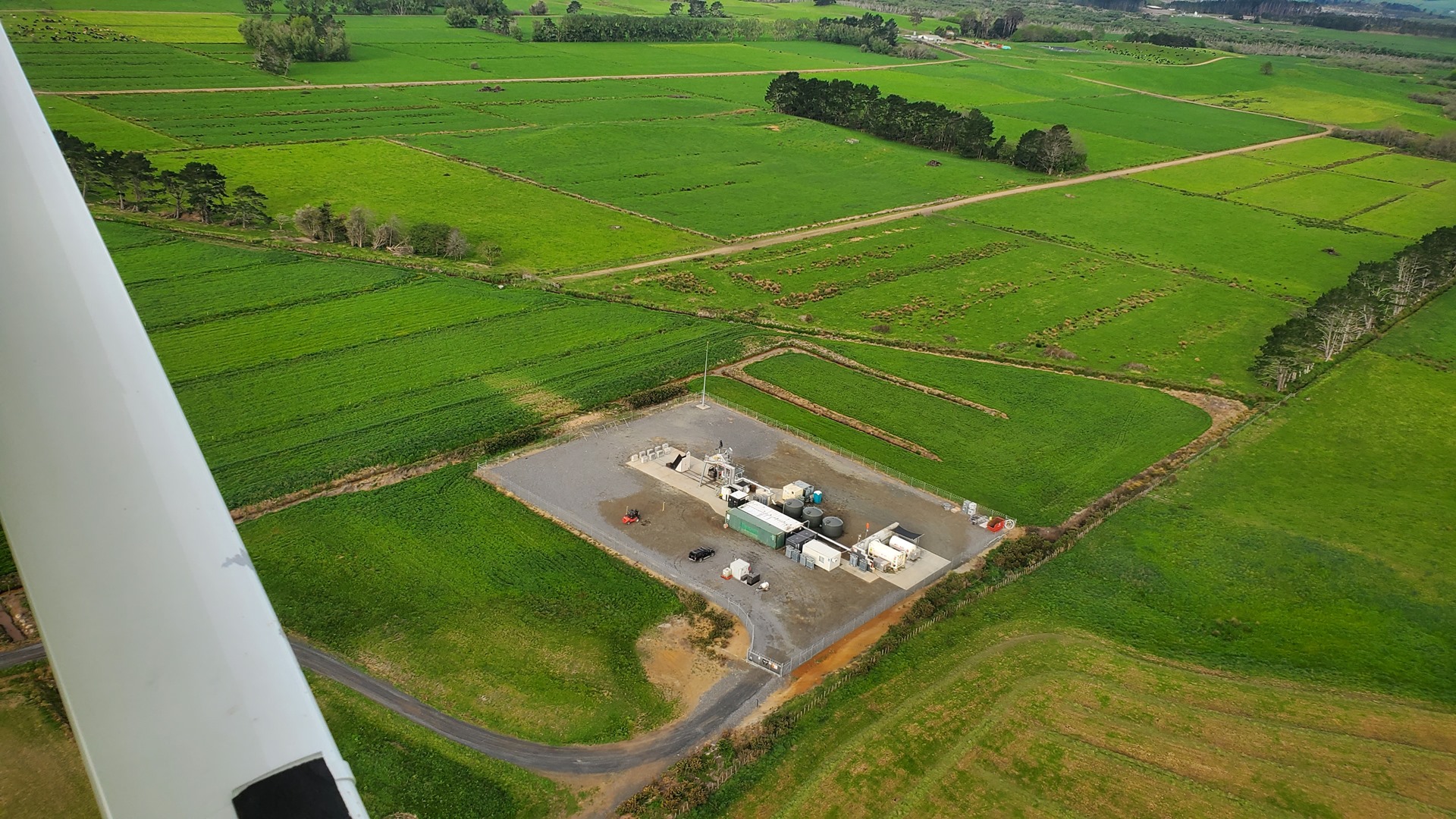
A few minutes later, I was touching down at Ardmore and parking up outside the Warbirds offices where I had been offered a tie-down spot for a few days. Tonight I’d be back at my AirBNB; and tomorrow, starting my overnight wilderness survival course in the New Zealand bush!
Click here to read the next part of the story.
